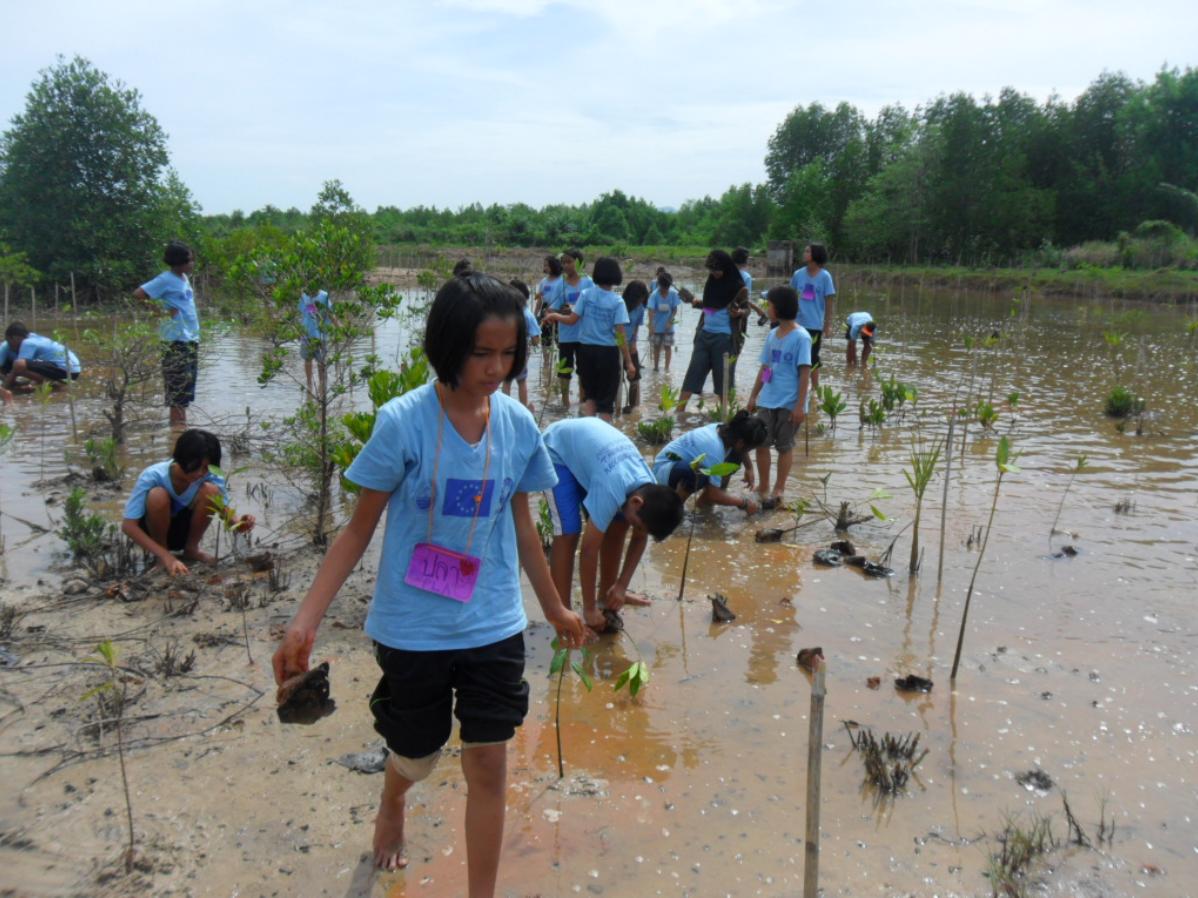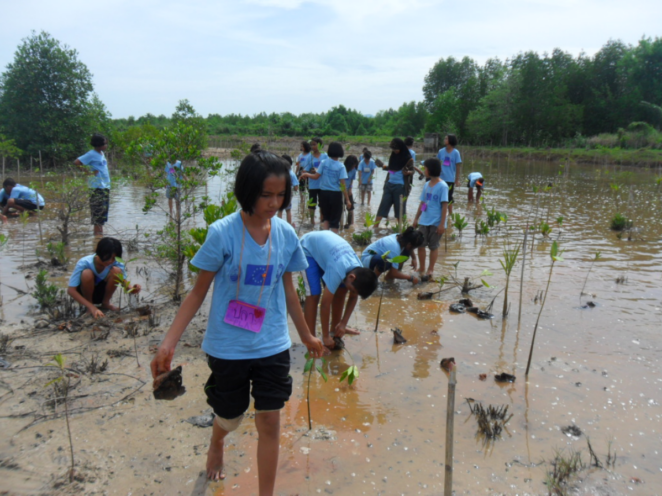Case-study /
Building coastal resilience to reduce climate change impact in Tambon Klong Yang, Amphur Koh Lanta, Krabi province, Thailand


Source: Raks Thai Foundation
Summary of Adaptation Challenge
Tambon Koh Klong Yang is located in the north of Koh Lanta district. Climate change intensifies weather conditions in the village. The community encounters stronger ocean wind and waves, especially in monsoon season, which is unpredictable nowadays and lasts over a longer period than in the past years. It causes shorter fishing and rubber harvesting season. In Tambon Klong Yang agriculture and fisheries are the main source of income.
A policy, which enabled the deforestation of mangrove forest, in combination with the use of mangrove wood as firewood for private purposes and the expansion of tiger prawn farms lead to a reduced number of marine organisms, which affected the local fishermen in a negative way. Environmental degradation poses a threat to the livelihoods of the villagers, since they do not own land and do not have alternative choices for income generating activities.
Methodology
CARE project staff and governmental and community representatives conducted a “Climate Vulnerability and Capacity Analysis” to gain information on climate change impact on livelihoods and existing adaptation strategies in the target communities. They applied participatory rural appraisal tools like seasonal calendar, hazard mapping and daily activity plans. Based on these findings, adaptation projects with communities and local government were designed. A feasibility study was conducted to ensure that interventions are climate smart. Additionally, local government was trained in budgeting to be able to integrate best adaptation practices into development plans. Experiences were then shared among Indonesian and Thai stakeholders and CARE staff to increase knowledge.
Adaptation options
Mangrove restoration in a deserted prawn farming area is initiated by community members’ participatory approach. Plants and marine life will be rehabilitated as the area can be naturally flooded with sea water. The crucial process is to enhance collaborative partnership among the community members, local non-profit organizations, local government agencies and local mangrove management-related administrative offices. Additional mangrove trees might be considered to be cultivated after the water flow system is adjusted.
Key messages
The community developed hand-on learning tools, applied from direct experiences of the community facilitators. In cooperation with Baan Klong Yang School they establish a learning centre to pass the knowledge to the young people in the community to raise awareness in community resource restoration.
Lessons learnt
The community recognized that the abundant mangrove forests serve as natural barrier to prevent the erosive impacts of ocean waves, wind and storms and facilitate safe boat landings. The rehabilitated coastal areas serve a source for food and natural materials for the local population in the long term if used in a sustainable way.
